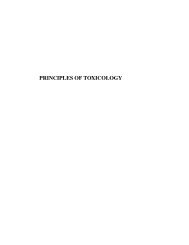Insect-pests - Biology East Borneo
Insect-pests - Biology East Borneo
Insect-pests - Biology East Borneo
You also want an ePaper? Increase the reach of your titles
YUMPU automatically turns print PDFs into web optimized ePapers that Google loves.
18 <strong>Insect</strong> Pests and Diseases of Major Plantation Species<br />
Among the stem canker diseases, pink disease caused<br />
by Corticium salmonicolor, a basidiomycete fungus<br />
infecting a wide range of hosts in high rainfall areas in<br />
the tropics, is common in Indonesia and is most<br />
prevalent in denser stands (Zulfiah and Gales 1997).<br />
It causes necrosis of the bark tissue on small stems,<br />
and branches, often leading to their breakage. Heart<br />
rot, caused by a complex of Phellinus noxius and other<br />
unidentified basidiomycete fungi entering through<br />
wounds, occurs in <strong>East</strong> Kalimantan (Lee and Sikin<br />
1999). However, the proportion of infected trees is<br />
small compared to some plantations in Malaysia. In<br />
Malaysia, more than 50% of trees have been infected<br />
in some places, but the wood volume damaged was<br />
small. It is not considered to be a major problem when<br />
the end use is pulpwood rather than timber (Old et al.<br />
2000). The hybrid, A. mangium x A. auriculiformis,<br />
is resistant to heart rot, as is A. auriculiformis (Ito<br />
and Nanis 1997). White root rot, caused by<br />
Rigidoporus microporus (syn. Fomes lignosus), has<br />
been recorded in plantations in Jambi and South<br />
Sumatra. The red root rot, Ganoderma philipii,<br />
formerly C. pseudoferreum, has been isolated from an<br />
A. mangium plantation in Yogyakarta.<br />
Threat Assessment<br />
In making an assessment of threat, the problems<br />
experienced in neighbouring countries must also be<br />
taken into consideration. For insect <strong>pests</strong>, Wylie et al.<br />
(1998) have reviewed the problems and listed 22<br />
species as main <strong>pests</strong> in the region covering Australia,<br />
Indonesia, Malaysia, Thailand and Vietnam. These<br />
<strong>pests</strong> can be categorised into five groups - leaf feeders<br />
(7 spp.), root or stem feeding termites (5 spp.), trunk<br />
borers (4 spp.), twig borers (4 spp.), and sapsuckers<br />
(2 spp.). Seven important <strong>pests</strong> in Indonesia were<br />
identified in an assessment made in May 1997 (Wylie<br />
et al. 1998). They were a root feeding termite (1 sp.),<br />
a twig borer (1 sp.), leaf feeders (4 spp.) and a sap<br />
sucker (1 sp.). In order of importance they are:<br />
Coptotermes curvignathus (root-feeding termite),<br />
Xylosandrus sp. (stem-boring scolytid beetle), Pteroma<br />
plagiophleps (leaf-feeding bagworm), unidentified<br />
caterpillar (leaf-feeding), Valanga nigricornis (leaffeeding<br />
grasshopper), Locusta sp. (leaf feeding), and<br />
Helopeltis theivora (sap-sucking bug). In a global<br />
review, Hutacharern (1993) considered there were<br />
only four serious <strong>pests</strong> of A. mangium. These were<br />
the termite, C. curvignathus; the buprestid root collar<br />
borer, Sternocera spp.; the bostrychid twig borer,<br />
Sinoxylon sp.; and the cossid stem borer, Zeuzera<br />
coffeae. Among the seven serious <strong>pests</strong> recognised<br />
by Wylie et al. (1998) for Indonesia, only the termite,<br />
C. curvignathus, was in Hutacharern’s list .<br />
We rate the sap-sucking bug, Helopeltis sp., as<br />
potentially the most serious pest, based on current<br />
knowledge of pest incidence in A. mangium plantations<br />
in Indonesia and the insect’s habits and past history in<br />
other crops. Two species of Helopeltis are reported<br />
to occur in forest plantations in Indonesia - H. antonii<br />
in Eucalyptus spp. (Rahardjo 1992) and H. theivora<br />
in Eucalyptus spp. and A. mangium (Hardi 1993;<br />
Wylie et al. 1998). In addition, H. fasciaticollis and<br />
H. sumatranus have been identified recently from<br />
A. mangium. Both H. theivora and H. antonii are<br />
serious <strong>pests</strong> of cashew in India. Helopeltis spp. have<br />
acquired pest status on various tree crops in Australia,<br />
China (Hainan Island), Malaysia, Philippines, Sri Lanka,<br />
Thailand and some countries in Africa. Many species<br />
of Helopeltis occur in Indonesia on a variety of crops<br />
and severe outbreaks occurred in the 1960s on tea in<br />
North Sumatra before the advent of modern<br />
insecticides (Kalshoven 1981). Difficulty in controlling<br />
them, other than through repeated chemical sprays,<br />
adds to the seriousness of the problem. It is already<br />
recognised as serious in young plantations in Sumatra.<br />
It was not found in a plantation examined by one of<br />
us (K.S.S.N.) in <strong>East</strong> Kalimantan, but it could build<br />
up there as it already occurs in adjacent Sarawak (<strong>East</strong><br />
Malaysia). Careful monitoring of Helopeltis spp. as a<br />
potentially serious pest of A. mangium is<br />
recommended.<br />
Root-feeding termites are the next most serious threat,<br />
during the establishment stage of the crop, as<br />
experienced in Sumatra, but they can be controlled<br />
effectively using insecticidal spot treatment.<br />
The risk of new <strong>pests</strong> emerging over time cannot be<br />
ignored. In 1992 a new pest, Spirama retorta<br />
(Lepidoptera, Noctuidae), attacked 800 ha of a 1-yearold<br />
A. mangium plantation in Peninsular Malaysia<br />
(Sajap et al. 1997b). Little was known about this insect<br />
which had been recorded on Albizia lebbek in India<br />
(Beeson 1941) and on an unknown host in Thailand<br />
(Hutacharern and Tubtim 1995). It has been recorded<br />
recently on A. mearnsii in China (Wang et al. 1998).
















